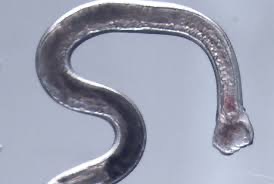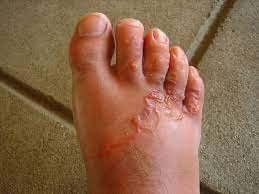
 Ancylostoma duodenale and Necator americanus are two hookworm species that can cause human infections.
Ancylostoma duodenale and Necator americanus are two hookworm species that can cause human infections.
Infectious larvae present in soil and penetrate the skin.
Larvae then reach the lungs via the bloodstream and invade the alveoli, ascend the airways, are swallowed and reach the small intestine where they mature into adult worms and attach to the mucosa and suck blood and interstitial fluid.
Most infections asymptomatic.
Commonly transmitted by contact with contaminated soil, although oral ingestion of the larvae is also possible.
Occurs predominately in impoverished areas and was a factor in delayed economic development in southern US.
Chronic infections are associated with iron deficiency and can lead to anemia hypoproteinemia, weakness and shortness of breath.
A pruritic rash at the site of skin penetration and serpiginous tracts of subcutaneous migration may be present.
Diagnosis requires isolation of hookworm eggs in the feces.
Diagnosis is established by stool examination, so this is an insensitive method and may require a serial examinations.
Eosinophilia may be a clue to the presence of a parasitic infection
Treatment includes albendazole 400 mg once, mebendazole 500 mg once or pyrantel pamoate11 mg kilogram daily for three days.
Emodepside shows activity in hookworm infections.
